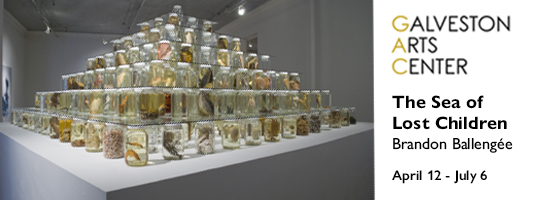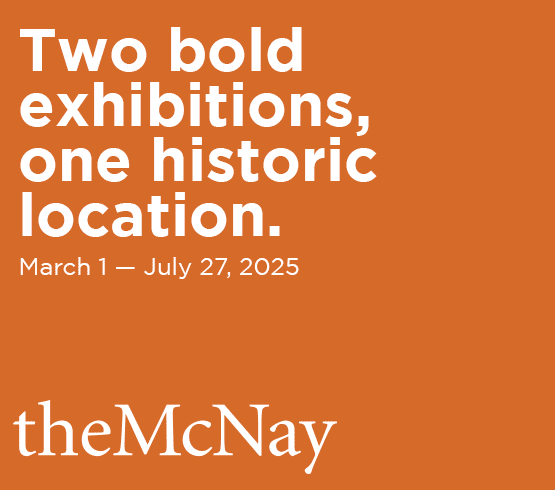Dallas-based artist Zeke Williams is addicted to making work. He began his career painting “serious” landscapes that were often inspired by trips to Yellowstone and the Great Smoky Mountains with his grandparents, who worked with the U.S. National Park Service. After their passing, he inherited their photo collection and felt the urge to capture all that natural beauty with a brush. But there was one eventual problem: “I am the ultimate ‘indoor kid,’” Williams says. “I do appreciate the outdoors and these places when I go there, but I’m not naturally drawn to them. It’s remarkable that I make a bunch of art about the natural world when I tend to gravitate toward the human-created one.”
His exhibition Bird Rights is on display April 27-July 7 at the Galveston Arts Center, coincidentally opening just after the conclusion of the 22nd annual birding and photography celebration, FeatherFest. Galveston has been Bird City Texas-certified since 2021, providing a safe haven for more than 200 species of brightly colored birds during their yearly northern migration.
“I think the fascination with birds is pretty universal,” Williams says. “They’re these amazing, weird creatures that fly, that are so varied in their looks and plumage. And they’re the closest thing to dinosaurs! I get why Darwin was obsessed with them.”
“I tend to make work about the place where the show is,” he says of his exploratory visit. “I really try and understand what it is I’m doing there.” Williams recalls the sanctuary as “this insane swamp area where they built a bunch of catwalks and there are a gazillion birds. It was so loud my smart watch questioned if I was in a stadium. Bucolic as hell, though.”
Prior to Galveston, Williams had been making freestanding birds that were shown in a Birds of the Big Bend exhibition at Eugene Binder’s Marfa gallery. “They were well-liked and interesting, silly in a fun way, and I really enjoyed making them,” he recalls. Those floating birds each soon gained their own vibrant habitat when Williams expanded them into the large-scale paintings he makes today.
Back in Dallas, Williams planned out the technical specs for the 11 pieces that now fill this exhibition. Each painting is around 49 inches tall, with some stretching as wide as six or seven feet. A printmaker at heart, Williams starts by creating entirely new tessellating patterns that are then downloaded into vector files for the robot that does the actual plywood carving.

1 ⁄6
Zeke Williams
Neotropic Cormorant
49 x 60 in

2 ⁄6
Zeke Williams
Anhinga
oil on CNC carved Birch plywood, red oak frame 65 x 40 in
Location: Deadbolt Studio

3⁄ 6
Zeke Williams
Little Blue Heron
oil on CNC carved Birch plywood, red oak frame 42 x 40.5 in

4 ⁄6
Zeke Williams
Long Billed Curlew
oil on CNC carved Birch plywood, red oak frame 49.5 x 80.75 in
Location: Deadbolt Studio

5 ⁄6
Zeke Williams
Great Egret
49 x 63 in

6 ⁄6
Zeke Williams
Cattle Egret
49.75 x 90.75 in
Though Williams longs to own every step of his process, he has accepted that it’s more efficient to rent time with the CNC machine and its owner, leaving him to focus on the overall colorful result. “I have forced myself to become at least a competent woodworker,” he laughs, noting that sometimes his skills are needed to replace tiny parts of wood, and that he still makes his own frames.
“All my work is a little playful and colorful and not necessarily ‘fine art’ that’s going to make you have an epiphany,” says Williams. “I make beautiful things because I want to make people happy. They’re serious enough to be ‘serious’ but beautiful enough for anyone to appreciate.”
—LINDSEY WILSON





